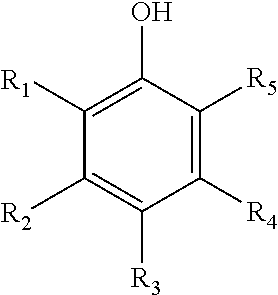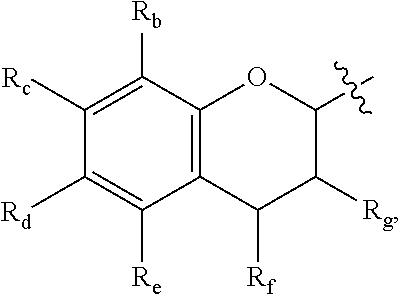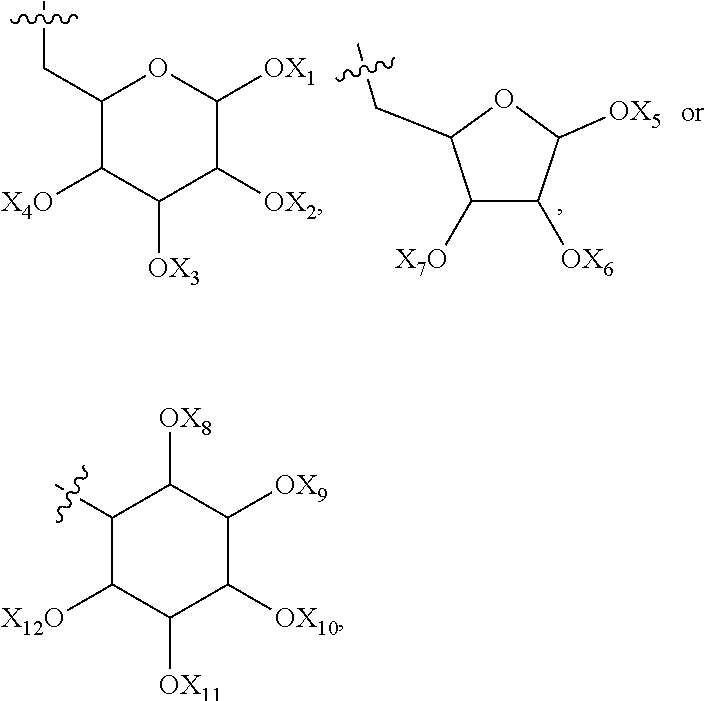Use of polyphenol compounds and hydrophilic polymers for reducing or preventing colloids adhesion and/or fouling on a substrate
a technology of hydrophilic polymers and polyphenol compounds, which is applied in the direction of polyether coatings, coatings, etc., can solve the problems of fouling, which is the accumulation of unwanted material on solid surfaces to the detriment of function, and achieve the effect of reducing or preventing fouling and/or adhesion of colloids
- Summary
- Abstract
- Description
- Claims
- Application Information
AI Technical Summary
Benefits of technology
Problems solved by technology
Method used
Image
Examples
example 1
ion of Plastic Surfaces
[0139]Polypropylene (PP), polycarbonate (PC), and polyvinyl chloride (PVC) substrates were modified according to the following procedure.
[0140]Tannic acid (TA) powder (2 mg / mL) was dissolved in 0.1 M Bicine buffer containing 0.6M NaCl followed by pH adjustment to pH 7.8. The plastic substrate were each immersed into the TA solution for a desired amount of time (1, 2, 4, 7 and 22 h) and then washed with 0.01 M phosphate buffer at pH 7.4 (1st wash) and pH 5 (2nd wash). The modified surface was immersed in solution of hydrophilic polysulfobetaine polymer (poly(sulfopropyldimethylammonioethyl methacrylate; “pSPE”), 1 mg / m L, 0.17M NaCl, pH from 2 to 7] for 5 to 15 min followed by washing with 0.01 M phosphate buffer with 0.17 M NaCl. The modified surface was dried under N2 or under ambient conditions on air.
[0141]With respect to the TA solution, 0.1 M Bicine buffer was also substituted with 0.01 M phosphate buffer or 0.1M Tris buffer, each with salt content (NaCl)...
example 2
[0142]Aluminum (A1203) coupons (either non-passivated or passivated by treatment with nitric acid) were first immersed in a solution of tannic acid (1 mg / mL in 0.1M bicine+0.6M NaCl) for 1 or 3.5 h. After the deposition, the coupons were washed twice with 0.01 M phosphate buffer at pH 7.4 (1st wash) and pH 5 (2nd wash). Hydrophilic polymer (pSPE, 1 mg / mL in 0.01M phosphate buffer+0.17M NaCl) was deposited at pH 5 by immersing the TA-coated coupons into the polymer solution for 5 or 15 min. The unattached polymer was removed by two washing steps with buffer at pH 5 (0.01M buffer+0.17 M NaCl). The coupons were air-dried.
[0143]Carbon steel substrate was similarly modified. Tannic acid was deposited from 0.1 mg / ml solution (0.01M phosphate buffer, pH 7.4) over a period of 7 min followed by washing with 0.01 M phosphate buffer (pH 7.4 and pH 5, two washes). Hydrophilic polymer was deposited under the same conditions as described for the aluminum coupons.
example 3
ization of Coating Thickness
[0144]The thickness of the first layer of the coating (polyphenol-containing layer) was determined by using ellipsometry.
[0145]Silicon wafers were used for the ellipsometry measurements. Since tannic acid does not adhere well to silicon wafers, cleaned Si-wafers were first coated with polyethyleneimine by spin-coating. The primed wafers were then immersed in solutions of TA (2 mg / mL, 0.1 M bicine, 0.6M NaCl) for 20 min, 4 h and 24 h. After the deposition, the wafers were washed in 0.01 M phosphate buffer and air-dried prior to the ellipsometry measurements.
[0146]It was observed that the thickness of the tannic acid layer on the surface increased with increase in the deposition time from 4.5 nm (after 20 min) to about 20 nm (after 24 h).
[0147]Additionally, increase in layer thickness is not linear with time as the rate of polymerization of tannic acid is rapid during the first 4-5 hours and decreases due to a smaller amount of available phenolic groups.
[01...
PUM
| Property | Measurement | Unit |
|---|---|---|
| Time | aaaaa | aaaaa |
| Thickness | aaaaa | aaaaa |
| Thickness | aaaaa | aaaaa |
Abstract
Description
Claims
Application Information
 Login to View More
Login to View More - R&D
- Intellectual Property
- Life Sciences
- Materials
- Tech Scout
- Unparalleled Data Quality
- Higher Quality Content
- 60% Fewer Hallucinations
Browse by: Latest US Patents, China's latest patents, Technical Efficacy Thesaurus, Application Domain, Technology Topic, Popular Technical Reports.
© 2025 PatSnap. All rights reserved.Legal|Privacy policy|Modern Slavery Act Transparency Statement|Sitemap|About US| Contact US: help@patsnap.com



